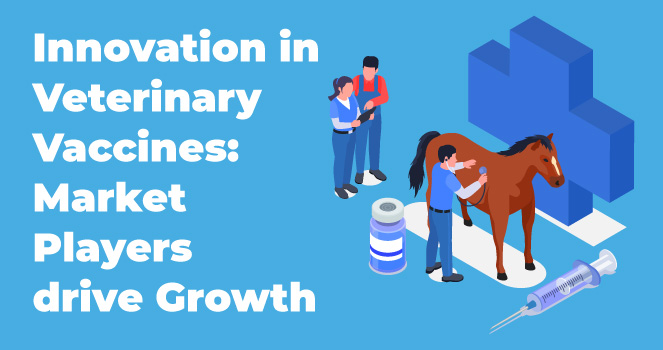



17, May 2022

Veterinary vaccines are gaining prominence owing to their effectiveness in protecting animals from various diseases, controlling their spread, and reducing their impact. Remarkable developments have been made over the years in vaccine technology. As per our experts’ estimates, the global veterinary vaccines market will develop at a CAGR of 7.46% from 2022 to 2028, gaining $12119.03 million in revenue by 2028.
The adoption of companion animals, primarily dogs and cats, has surged significantly in recent years. According to a survey, 70% of households in the United States have a pet. They are likely to be affected by rabies, giardia, parainfluenza, feline leukemia virus, heartworm, etc. This has increased the demand for vaccines to keep them healthy.
Also, meat and dairy products are consumed considerably all over the globe, making it crucial to keep livestock in a healthy condition. They are mostly found together in herds, which increases the risk of disease spread. This necessitates the use of vaccines to contain the outbreak.
To address the issue of diseases that affect animal health, governments across the world are initiating wide-scale programs and campaigns that have escalated the demand for veterinary vaccines. For instance, in India, the government has allotted more than INR 13,000 crores to vaccinate 100% cattle, buffalo, goat, sheep, and pig population for Brucellosis and FMD under the National Animal Disease Control Program. It aims to contain these diseases by 2025 and eradicate them by 2030.
Companies and numerous research organizations are looking for ways to develop more efficient solutions for vaccination. Efforts are underway to produce heat-resistant vaccines that can help reduce storage costs, as manufacturers have to otherwise maintain large deposits in cold storage warehouses.
Further, in October 2020, Boehringer Ingelheim launched VAXXITEK® HVT+IBD+ILT, the first one-shot-only vaccine to protect cattle against infectious bursal disease, infectious laryngotracheitis, and Marek’s disease. The enhanced focus on R&D to develop innovative and advanced products is expected to largely benefit companies as it helps them to stay relevant in the industry and move up the competitive ladder.
In Belgium, the biopharmaceutical company ViroVet NV and the Rega Institute for Medical Research developed a vaccine for porcine reproductive and respiratory syndrome (PRRS) in October 2020. It is based on the plasmid-launched live attenuated virus (PLLAV) technology, which helps in faster and more cost-effective design and production.
The high animal population is attracting a number of domestic and international market players to this region. Estimates from the Thai Pet Product Association suggest that there were nearly 14.5 million pets in Thailand as of 2020. They are likely to be affected by rabies, canine distemper, tick-borne diseases, etc., which can be prevented by vaccination. Union Castap Co Ltd, Biovalys, and Supreme Pharmatech are some of the leading regional manufacturers and sellers present here.
Live attenuated vaccines (LAV) are obtained from causative agents like viruses or bacteria, which are weakened in laboratories. Nobivac® DHPPi by Merck Animal Health is one such LAV used to immunize dogs against canine parvovirus, canine adenovirus, canine distemper virus, and canine parainfluenza virus.
There is high pork consumption in North America and Europe. Pigs are likely to develop conditions like swine brucellosis, classical swine fever, pseudorabies, etc. In February 2022, Canada’s Manitoba province and its federal government came together to fund a couple of projects under the Canadian Agricultural Partnership to protect swine health and manage diseases in them.
The constant need to be ahead of the competition and provide the best-in-class products to buyers is pushing vaccine makers to be innovative. For instance, companies like Phibro Animal Health offer autogenous or custom solutions to tackle diseases. On the other hand, HIPRA SA has developed the HIPRAlink® app to store and manage all data pertaining to vaccination. Such innovative approaches by players are expected to keep the veterinary vaccines market going, and benefit not just the companies, but also the customers and other stakeholders in the long run.
FAQs:
Toxoid vaccines, subunit vaccines, attenuated vaccines, conjugate vaccines, DNA vaccines, recombinant vaccines, and inactivated vaccines.
Bluetongue disease, rabies, bovine anemia, mastitis, feline immunodeficiency virus, cryptosporidiosis, avian leucosis virus, and foot rot.

Prevalent cases of terrorist attacks in today’s world is increasing the need for severe standards of security for public safety, and the global market for biometric technology scrupulously accommoda..
Prevalent cases of terrorist attacks in today’s world is increasing the need for..